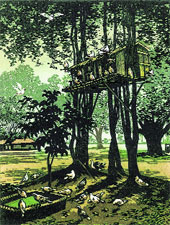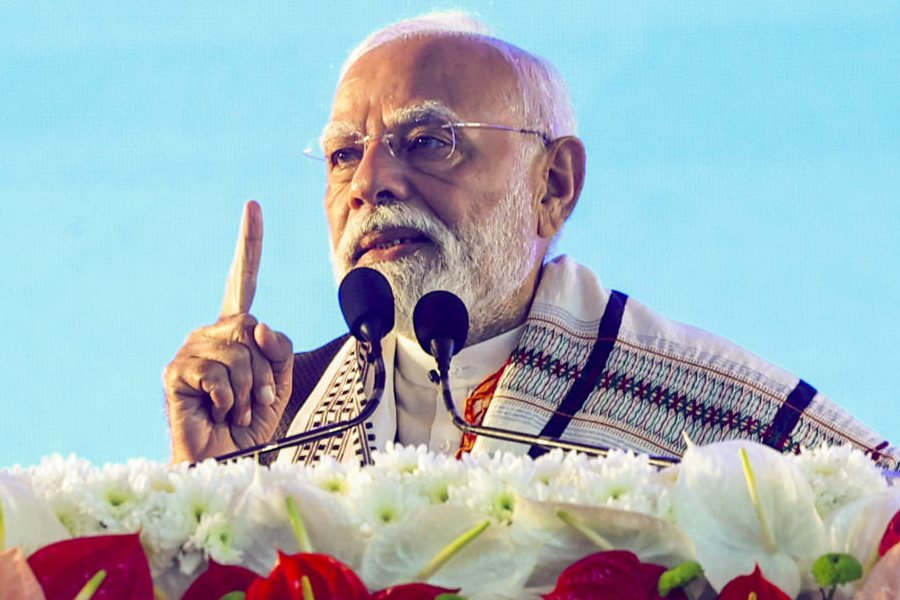 |
 |
| Pigeon’s Home by Haren Das (top) and Mother and Child by Sarbari Roy Chowdhury |
An exhibition of Haren Das’s (1921-93) woodcuts at the Academy of Fine Arts reminds one of his stature as an artist. It was Ibrahim Alkazi, the noted theatre personality, who had arranged Das’s retrospective at Art Heritage, New Delhi and established him as a major printmaker. He could also execute wood engravings, line-cuts, etchings and cave reliefs with equal ease. He headed the graphics department, Government Art College from 1947 to 1979. The institution had a tradition of printmaking, which had begun with Anandapraasad Bagchi (1849-1905). Former principal Ramendranath Chakravorty carried on the tradition. Das, who was trained by Chakravorty, enlarged and reinterpreted the tradition. The content areas of Das' works are simple, but his technical competence is unbelievably complex. Both in black and white and colour woodcuts, he has excelled in depicting the lifestyle and culture of rural folk. He seems to sanctify their activities as they plough the land, draw water, and go about their household chores. There are elements of documentation in the prints. But the visual and aesthetic rewards are far greater than photography.
An exhibition at Chitrakoot featured 13 sculptures by Sarbari Roy Chowdhury and 12, mostly bronze works, by his son Saurav. Sarbari has used the classical musicians’ way of introducing their sons or daughters by a jugalbandhi (duet) performance, although Saurav’s style and aesthetic approach is entirely different to that of his father. Except for the expressionistic head of the great sculptor Alberto Giacometti, Saurav’s other 11 works are independent of the figure and do not care for resemblance. He is content to evoke the incommunicable, strange dance movements that visit us in dreams. Sarbari’s classical modernist works are like orchestral accompaniment to Saurav’s sole performance. Sarbari’s expressive head of Ramkinkar, reclining and relaxing women, kissing figures, the Mother and Child are experiments in turning figures into significant forms and working out a perfect balance of mass in volume. He envisions the body as an undulating fecund field of tactile events. In addition, his out of this world patinas indicate his greatness as a sculptor.
Sanat Kar’s exhibition The Lyrical Mudra at Akar Prakar had both his graphics and paintings. His sculptures were, however, not on display. He is widely known and respected as a printmaker. Of late, however, he has drifted to painting and sculptures like other contemporary printmakers. Some say this is because prints do not sell in India. In Kar's etching and wood intaglios (a medium he invented), there are repeated and unrepeated lines and planes which work at pointing to the variations of the colours. In Man and Woman, the nervous contour lines encase figures and their shadows, while the surrounding short green strokes add to the suggestion of their insecurity. In Etching III, he plays an unrestricted game of pure geometry. The linear abstraction of Etching VIII has vague affinities to Neo-Plasticism.
In Woodintaglio I and II, the playfulness of cross-hatching dominate. The emphasis is more on texture. Kar has tried to repeat his graphic skills and excellence in oil and tempera paintings with varying degrees of success.











